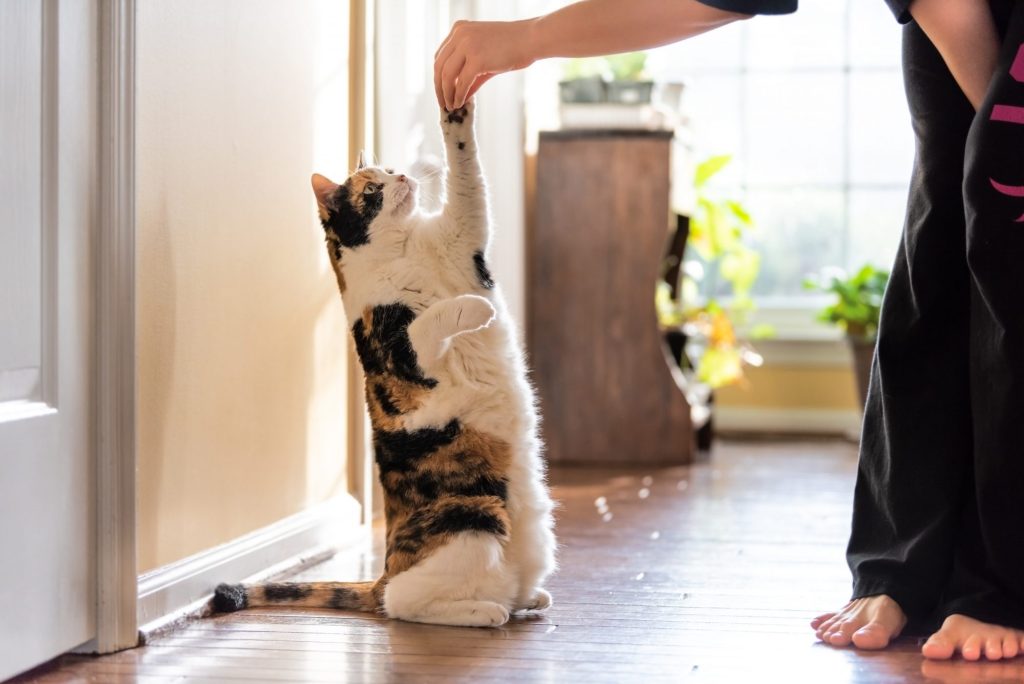When you learn to train your cat, you start with the first steps that reward the desired behavior and discourage unwanted. But can you train a cat as you would a dog? Yes and no. Because they are highly independent animals, cats may seem apathetic or unwilling to follow your instructions. However, this does not mean that you cannot change their behavior. If you are patient and consistent, your new cat or adult cat can be trained in no time.
What do you want to teach?
First, decide what you want your cat to learn, and then work on it slowly each day. However, before you start training your cat, consider what instructions you will use and the type of behavior you want your cat to learn. Think about what you may have been worried about in the past. The way to train your cat is to use a trash can, ways to calm down on the journey to the vet, and so on. How can you teach her not to scratch your carpet or furniture? These are some of the options you can work on during training.
Other common goals include:
- Training at home or in a sandbox.
- Come when called or signed.
- Stay calm and still decorate her.
- Treat yourself, other people, or other animals.
Walk quietly (get in the carrier and get in the car).
There are important reasons to learn how and why to train your cat. But above all, it teaches him to behave in a certain way and will make him more friendly and happy with people and animals. Training is also important for your well-being; If your cat learns to calm down while cutting nails or walking, there will be no problem for him or you. The better your cat’s habits, the better your relationship will be.
Shorten each part and narrow down the main points
Once you’ve figured out what lessons you and your cat can do, this is the first time. First and foremost, your watch cat is shorter than yours; you would not expect him to always be interested in your teaching. Let the student say how long he or she wants to be in your company.
Because some cats learn to use a trash can quickly (and even before they get home to you) after seeing their mother using the trash can, this type of training time may be short. However, you may want to direct him to the trash can first to remind him where he is. If you are teaching your kit to play with his toys (and with you), lessons can gradually increase. Cats often like to explore new toys on their own, which means your job will be to respect their environment and stay within the time of their inspection. Once you get used to something new, you can take part.
Start Small
If you enjoy training, you may want to jump in and train your cat all at once. Therefore, to be successful, it is a good idea to practice one subject at a time. Once your cat has mastered whatever you are working on, you can move on to the next training exercise. For example, when you bring a new cat home, you will want to throw a box to teach him there. Once you have this ground you can work on interacting with other pets, then calming them down, and so on.
Do not limit yourself to another area
Once your cat has learned the rule, show it to different parts of the house. If you are bringing a kite with other pre-existing animals, and you just bring them together in a room, they may believe that another animal exists only in that area. This is not a problem if another animal is a fish, but if your cat encounters a dog, it should understand that it will be found elsewhere as well.
Similar to the waste box training, some types of training will require the use of different areas of the home. If you are teaching her to live indoors, sometimes it is important to have more than one garbage can in her hand. To avoid scratching the curtains and furniture also requires difficult lessons, and she will find those items in more than one room.
Connect other people
If the residents are you and your cat, you should not worry too much about involving others in the training process. However, you want your cat to be social and not social. You have just brought your cat home, invite friends or family members to socialize with your new pet. Just remind them not to push too hard on their introduction. As you slowly teach her, you should allow your cat the freedom to do so.
If you are bringing cats into a large family, it is even more important to include everyone in the Cat Training. There are many reasons why a family should be involved, but it is especially important for reasons of compatibility and building relationships. After all, you will see these faces every day. Everyone should be clear about the goals of the training and the methods used to achieve it.
Use reward system
Rewards for strengthening good habits are very encouraging, especially during training. There are two types of prizes for your new furry friend experiment. First, remember that he will enjoy any praise you give. Speak to her in a kind, upbuilding voice and remind her of your pride. Say “Good boy” or “Well done” while stroking or stroking his hair to make sure he is happy.

